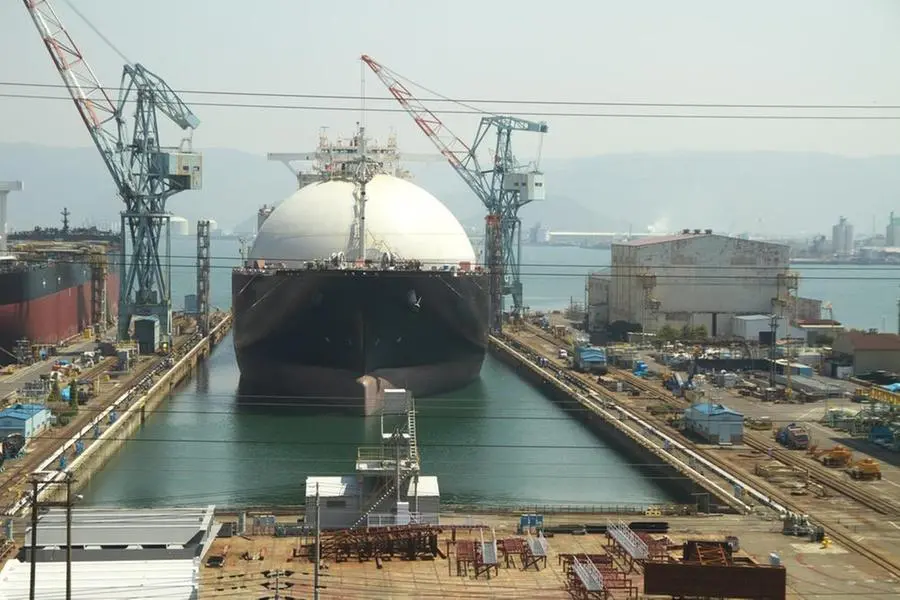PHOTO
U.S. natural gas futures fell about 4% on Friday from the previous session's 13-year high on forecasts for a rise in output, milder weather and a drop in demand in the next two weeks. U.S. front-month gas futures for June delivery fell 37.2 cents, or 4.2%, to $8.411 per million British thermal units (mmBtu) at 10:31 a.m. EDT (1431 GMT).
On Thursday, the contract closed at its highest since August 2008 for a third day in a row. Despite Friday's decline, the contract was still up about 16% for the week.
Earlier in the week, U.S. gas futures followed oil prices higher after the EU proposed a phased embargo on Russian oil in response to Moscow's Feb. 24 invasion of Ukraine. Analysts said the proposed oil embargo increased the possibility the EU would seek to ban Russian gas in the future.
Forecasts for extreme heat this weekend in Texas and other Gulf Coast states should boost the amount of gas power generators burn to keep air conditioners humming, pushing next-day gas prices at the Henry Hub benchmark in Louisiana to their highest since the February freeze of 2021.
One of the more surprising things about the recent U.S. gas price run-up was that while U.S. futures soared about 46% over the past month, European gas lost about 5% during that time as Russia continued sending supplies via pipeline and liquefied natural gas (LNG) vessels keep delivering cargoes. U.S. gas futures have already gained about 125% so far this year as higher global prices kept demand for U.S. LNG exports near record highs since Russia's invasion. Gas was trading around $32 per mmBtu in Europe and $24 in Asia.
Data provider Refinitiv said average gas output in the U.S. Lower 48 states has increased in recent days, running at 94.3 billion cubic feet per day (bcfd) so far in May, compared with 94.5 bcfd for the whole month of April. Refinitiv projected average U.S. gas demand, including exports, would slide from 90.6 bcfd this week to 90.4 bcfd next week and 89.5 bcfd in two weeks as the weather turns seasonally milder. The forecast for next week was higher than Refinitiv's outlook on Thursday.
The amount of gas flowing to U.S. LNG export plants rose to 12.3 bcfd so far in May from 12.2 bcfd in April, but remains below the monthly record of 12.9 bcfd in March. The United States can turn about 13.2 bcfd of gas into LNG. Since the United States will not be able to produce much more LNG anytime soon, it has worked with allies to divert LNG exports from elsewhere to Europe to help EU countries and others break their dependence on Russian gas. Russia, the world's second-biggest gas producer, has provided about 30%-40% of Europe's gas, totaling about 18.3 bcfd in 2021.
The EU wants to cut Russian gas imports by two-thirds by the end of 2022 and refill stockpiles to 80% of capacity by Nov. 1, 2022 and 90% by Nov. 1 each year from 2023. Gas stockpiles in Northwest Europe - Belgium, France, Germany and the Netherlands - were about 18% below the five-year (2017-2021) average for this time of year, according to Refinitiv. That is about 32% of full capacity.
(Reporting by Scott DiSavino; Editing by Edmund Blair and Marguerita Choy)








